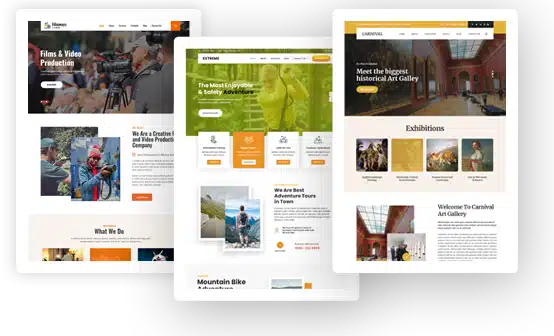Language Meets Design: Why Content Precision Matters More Than Ever in Web Marketing

In the competitive world of website design and digital marketing, much attention is given to visuals, speed, and search engine visibility. But as algorithms grow smarter and audiences more selective, another element has become increasingly important: the precision of language.
While the role of content in marketing has been discussed for years, what’s new is the level of scrutiny content now faces—from search engines, users, and even regulators. A website’s tone, structure, and clarity now play as crucial a role as its mobile responsiveness or UX design. For digital agencies and marketers, language is no longer just a support element—it’s strategy.
The Rise of Language-Centric Web Strategy
Google’s recent algorithm updates continue to emphasize “helpful content,” which prioritizes user-centric writing over keyword stuffing and fluff. At the same time, accessibility standards are pushing companies to write with greater clarity to ensure inclusivity across diverse audiences.
Meanwhile, the growth of voice search and AI-driven tools has created new challenges for content that must read well aloud, align with natural language patterns, and respond to increasingly conversational search queries.
For web designers and marketers, this means one thing: surface-level content is no longer enough. Language must now be accurate, structured, and intentionally crafted to match the expectations of real users.
Why Content Clarity Impacts Performance
The connection between clear language and better web performance isn’t just theoretical. Clarity influences everything from bounce rate to conversion rate. Visitors are more likely to stay on a site that’s easy to read and scan. Search engines reward well-structured content. Even backlinks—one of the most valuable SEO assets—tend to favor pages that clearly communicate value.
This is where grammar, vocabulary, and word structure come into play. It’s not just what you’re saying, but how you’re saying it. Understanding word formation in English—how prefixes, suffixes, and root words combine to form meaning—can help writers and marketers fine-tune their message for both precision and impact.
When used effectively, this knowledge shapes more compelling calls-to-action, clearer headings, and stronger keyword targeting. It also aids in maintaining consistency across multilingual or international websites—an increasingly common scenario for growing brands.
Microcopy and UX Writing: Small Words, Big Role
Beyond blog posts and landing pages, the importance of language is particularly visible in UX writing. These tiny fragments of text—button labels, error messages, tooltips—can make or break the user experience.
Well-written microcopy helps guide users through complex processes, reduces friction, and instills confidence. It also supports accessibility by making navigation more intuitive. But achieving that clarity requires a strong understanding of how words function and how they are perceived—especially across different audiences and reading levels.
Design and development teams are now collaborating more closely with writers to ensure that every word supports the user journey. In some organizations, content strategists are embedded in design sprints, bringing language expertise into the product lifecycle from the start.
The AI Effect: New Content, New Challenges
The explosion of generative AI tools has added new layers to the content and design conversation. While tools like ChatGPT can produce large volumes of content quickly, the output often lacks nuance, structure, and context.
That’s pushing web professionals to take a more editorial role—reviewing AI-generated content for grammar, accuracy, and brand voice. It’s also making a strong command of language even more valuable in distinguishing high-quality content from generic or machine-written material.
This AI shift is leading to a renewed emphasis on fundamentals: grammar, sentence construction, and lexical variety. Content teams are revisiting their writing frameworks, refining guidelines, and prioritizing training in areas like tone, clarity, and even etymology.
Internationalization and Language Sensitivity
For businesses operating across borders, linguistic nuance becomes even more essential. Content that performs well in one market can fall flat—or worse, confuse—in another. The ability to recognize and adapt word formation, idiomatic usage, and grammar structures across dialects is essential for maintaining credibility.
Design teams are also increasingly mindful of how word length and structure affect layout. A three-word CTA in English might become a six-word phrase in German or a completely different structure in Japanese. These variations aren’t just translation issues—they’re design and user experience concerns.
Content Governance: From Trend to Necessity
As content becomes more central to business success, the need for content governance is growing. Style guides, editorial policies, and language frameworks are no longer “nice to have”—they’re essential tools for maintaining consistency across teams, platforms, and customer touchpoints.
Web agencies and internal teams are beginning to treat language like they do design systems: with scalable standards, version control, and cross-functional collaboration. This approach ensures that messaging stays consistent as sites evolve and grow, especially in complex ecosystems like e-commerce, SaaS, or publishing.
Final Thoughts
The future of web content isn’t just about algorithms or automation—it’s about intention. Language has always shaped the way users experience digital spaces, but today, its influence is measurable and material. The difference between a page that converts and one that doesn’t often comes down to how clearly—and confidently—it communicates.
As web design and digital marketing continue to merge, professionals who invest in language—just as they do in code or design—will be better equipped to deliver results. In a world where attention spans are short and content is endless, clarity is the new competitive edge.

